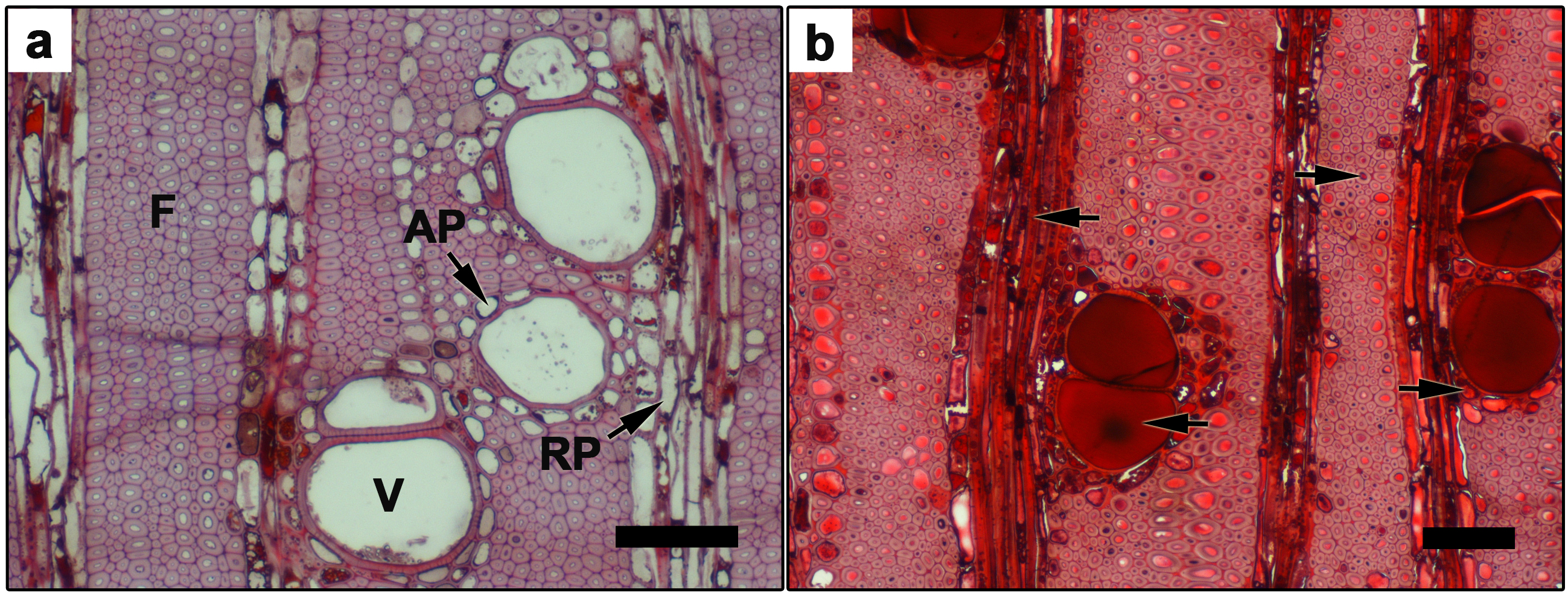Characterization of host-fungus interactions among wood decay fungi associated with Khaya senegalensis (Desr.) A. Juss (Meliaceae) in Singapore
Abstract
Tree pruning creates wounds that are amenable for wood decay fungi colonization. To characterize the dynamic host–fungus interactions at this location in Senegal mahogany (Khaya senegalensis), in vitro and in vivo pathogenicity tests were conducted with wood decay fungi associated with this tropical tree species. Fomitiporella caryophylii, Hymenochaete murina and Phellinus noxius isolates were included in this experiment following their frequent isolation from Senegal mahogany pruning wounds. The evaluated isolates demonstrated unique host interactions in laboratory tests that suggest equally divergent prognoses for living Senegal mahoganies affected by these fungi. Although all evaluated fungal isolates successfully breached naturally induced reaction zones, P. noxius alone caused significant mass loss to incubated wood blocks. In addition, P. noxius caused extensive wood decay after inoculation in living hosts, successfully illustrating Koch’s postulates for this host–fungus relationship. The wood decay ability, invasiveness and facultative parasitism demonstrated by P. noxius suggest its dominant role in wood decay columns below pruning wounds on living Senegal mahoganies. These results highlight the importance of characterizing specific host–fungus interactions and their implications for wood decay severity below pruning wounds in living trees.
Illustrative figure

Materials
BibTeX citation
@article{Burchametal:2017,
Author = {Daniel C. Burcham, Jia-Yih Wong, Mohamed Ismail Mohamed Ali, Nelson V. Abarrientos, .Yok-King Fong, Francis W.M.R. Schwarze},
Doi = {10.1111/efp.12199},
Journal = {Forest Pathology},
Month = {5},
Pages = {492-504},
Title = {Characterization of host-fungus interactions among wood decay fungi associated with Khaya senegalensis (Desr.) A. Juss (Meliaceae) in Singapore},
Volume = {45},
Year = {2015}}